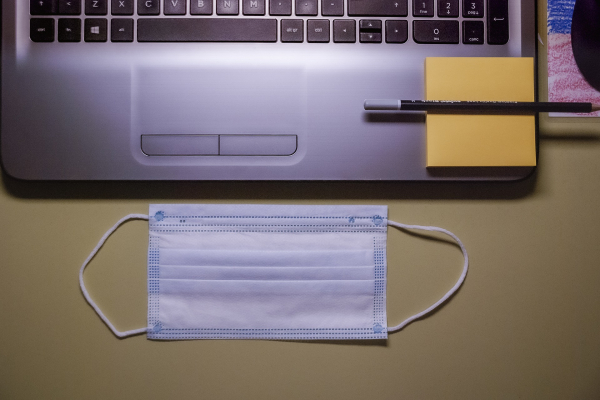By enabling collaboration with the help of two-way communication, one can lead the pandemic driven crisis into an opportunity to strengthen the trust and the culture of the organisation, thus, increasing long-term engagement.
Over the past year, billions of employees across the globe have been working remotely amidst the COVID-19 pandemic to break the chain of the infection spread. With the COVID-19 pandemic, organisations, especially those in India, have become more acceptable to the concept of work from home. According to the estimates by John Macomber, a Senior Lecturer for Business Administration at the Harvard Business School, the COVID 19 pandemic has accelerated the acceptability of work from home by 20 years.
While remote working has its pros and cons, a lot of organisations are now planning on bringing a certain percentage of employees, if not all, back to the office for the simple reason of reviving the live connection. In the book ‘Venus in Arms’, Criss Jami has mentioned, ‘An overindulgence of anything, even something as pure as water, can intoxicate.’
The same applies to work from home as well. A permanent remote working set-up can intoxicate the culture of an organisation. While technology will keep advancing with time, there is absolutely nothing that can replace the human factor. The return back to office, however, will not be the same as it was before the pandemic – it will be a lot more flexible, and offices will be a lot less dense in terms of employee strength at a single point in time.
Preparing employees to return to office
According to the 21/90 rule, it takes 21 days to build a habit and 90 days to build a lifestyle. With the COVID19 pandemic, being productive on a work from home day, which earlier seemed to be a highly challenging task, has now been proved otherwise. There is no denying that remote working was forced upon organisations and employees. It is obvious that no organisation would have chosen to switch to 100 percent remote working overnight, but over the year, employees have shown that they can adapt to doing their jobs remotely - quickly and efficiently. The return back to the office will not happen overnight, however, organisations and the management need to be patient for this to happen in a staggered manner as the remote working lifestyle that employees have adapted to over the past year will take time and effort to change.
The need to return to offices
The most tricky and complex question of ‘Why’ to return back to the office when one can work remotely needs to be answered to the employees. More than answering, employees need to be sufficiently convinced. This is because it warrants significant effort from both the organisation as also the employees to successfully return to the office. The lack of effort could result in utter dissatisfaction amongst the employees, thus, resulting in huge attrition for the organisation.
The criticality of communication
To make the employees’ return to the office successful, frequent communication with employees will be required in three phases – the pre-return phase, the initial return phase and the settling in phase - a few months after the return phase.
The pre-return phase: The pre-return phase could roughly range from one month to three months before the date of return to work from the office. This phase is the most critical, since, during this time, the organisation and the leaders get on to conversations with the employees in various forums like town halls, one-on-one discussions and other employee connect sessions and get the employees’ perspective so that they can plan accordingly. The sooner this conversation happens, the better it is for planning the return strategy basis the feedback and suggestions from the employees.
The initial return phase: Communication during the initial return phase is important to improvise the unanticipated and unexpected challenges that may come about. Considering the uncertain scenario of COVID-19, one cannot eliminate the need for real-time improvisations to make the return successful and more comfortable for the greater organisation.
The settling in phase: The settling in phase could range from two to four months of return to the office. During this phase, regular employee connect sessions could be of great help in collaborating the suggestions and ideas from every one to further come up with better solutions for more comfort and safety while working from the office with the New Normal.
Talking about workplace safety measures
The return to the office will involve a lot of safety measures and protocols so that the office can be a safe place to work. And, it is of utmost importance that the employees are aware of the routine safety measures they need to adhere to so that they keep themselves and the people around them safe.
Organisations could run internal campaigns and initiatives around COVID-19 and the New Normal lifestyle for employees’ daily life to keep themselves safe from getting infected. Since the current times of COVID-19 have never been encountered, it is best to phase out campaigns and initiatives for a greater understanding. Each phase could focus on what best could be done, what could be avoided and what must not be done to keep ourselves safe, especially when employees commence work from the office. It is critical what an employee does while coming to the office from home, while in the office, and while returning back home from the office, considering the nature of the virus. Such campaigns and initiatives would help organisations to create awareness and sensitise employees that they need to adapt to the new ways of working on their return back to the office postpandemic. This could further help organisations to come up with better and improvised solutions and ways to keep away from infection spread, thus collaborating with the employees for custom-made solutions. It will also help them to take advantage of the collective wisdom of all employees as well as leaders to make the workplace which best suits the employees as well as the organisation in maintaining everyone’s safety.
The return back to the office is not a one-man task. It will be a collaborative effort by every single employee within the organisation to come up with suggestions and solutions to make the workplace of his/ her choice. Lack of communication, collaboration and sensitisation would only result in employee dissatisfaction and the return to the office would end up as being forced and coerced. By enabling collaboration with the help of two-way communication, one can lead the pandemic-driven crisis into an opportunity to strengthen the trust and the culture of the organisation, thus, increasing longterm engagement. Like John Adams has said, “Every crisis is an opportunity in disguise.”

Does your organisation support you in maintaining work-life boundaries?
Trending
-
SBI General Insurance Launches Digital Health Campaign
-
CredR Rolls Out 'Life Happens' Leave For Its Employees
-
Meesho Announces 30-Week Gender-Neutral Parental Leave Policy
-
Microsoft Unveils Tech Resilience Curriculum To Foster An Inclusive Future
-
60% Indian Professionals Looking For Job Change Due To COVID: Survey
-
SpringPeople And Siemens Collaborate For Digital Transformation Push
-
86% Professionals Believe Hybrid Work Is Essential For Work Life Balance: Report
-
Almost 1 In Every 3 People's Personal Life Affected Due To Work Stress
-
Meesho Rolls Out Reset And Recharge Policy For Employees
-
80% Of Talent Leaders & Academics Say Pandemic Changed Skill Needs For Youth: Report
-
Hero Electric Rolls Out 'Hero Care' Program For Employees
-
Human Capital In Collaboration With ASSOCHAM Hosts Virtual Conference
-
IKEA India, Tata STRIVE Collaborate To Create Employability And Entrepreneurship Opportunities
-
SAP India, Microsoft Launch Tech Skilling Program for Young Women
-
DXC Technology, NASSCOM Collaborate For Employability Skills Program
-
Lenskart To Hire Over 2000 Employees Across India By 2022
-
Mindtree Launches Learn-and-Earn Program
-
Tata AIA Extends 'Raksha Ka Teeka' To Its Employees
-
Swadesh Behera Is The New CPO Of Titan
-
NetConnect Global Plans To Recruit 5000 Tech Professionals In India
-
Hubhopper Plans To Hire 60% Of Indian Podcasters By 2022
-
Corporate India Needs More Women In Leadership Roles: Report
-
Aon to Invest $30 Million and Create 10,000 Apprenticeships by 2030
-
Tech Mahindra Launches ‘Gift a Career’ Initiative for Upskilling of Youth
-
40% Women Prefer Flexible Working Options in Post-COVID World: Survey
-
3 out of 4 companies believe they can effectively hire employees virtually: Report
-
Vodafone , CGI and NASSCOM Foundation launch digital skills platform
-
Odisha: Bank, postal employees to deliver cash for elderly, differently-abled persons
-
Skill India launches AI-based digital platform for "Skilled Workforce"
-
Hiring activity declines 6.73% in first quarter: Survey
-
70% startups impacted by COVID-19 pandemic
-
Bajaj Allianz Life ropes in Santanu Banerjee as CHRO
-
Over 70 Percent MSMEs look at cutting jobs to sustain businesses
-
93 Per Cent employees stressed about returning to office post-lockdown
-
Johnson & Johnson India announces family benefits for same gender partners
-
Indian firms turning friendly towards working mothers
-
Welspun India names Rajendra Mehta as new CHRO
-
Wipro partners with NASSCOM to launch Future Skills platform



Human Capital is niche media organisation for HR and Corporate. Our aim is to create an outstanding user experience for all our clients, readers, employers and employees through inspiring, industry-leading content pieces in the form of case studies, analysis, expert reports, authored articles and blogs. We cover topics such as talent acquisition, learning and development, diversity and inclusion, leadership, compensation, recruitment and many more.
Subscribe Now












































Comment